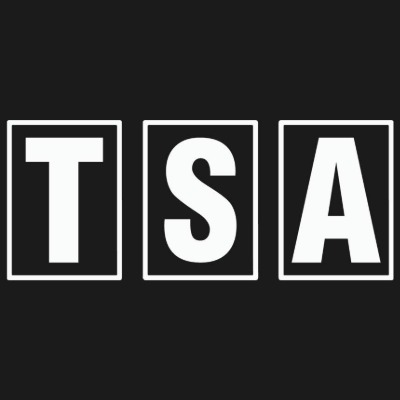Destimetrics - Economic Turbulence, So-So-Snow, And Canadian Pullback Contributing To Soft Finish To Winter Season

Western mountain resorts are chuffing towards the winter season’s finish line as uneven snow conditions and tumultuous economic policies have converged to make the final weeks of the 2024-25 ski season less robust than hoped. But according to Inntopia’s most recent DestiMetrics* monthly Market Briefing report released yesterday, two of three core performance metrics for the season—average daily rates (ADR) and revenues—remain solid for the six months from November through April while occupancy slipped. However, notable cracks have appeared as consumer optimism falters. Most notably, hopes for a late season surge in Easter bookings didn’t materialize and Canadians have pulled back sharply on booking US destinations with many cancelling existing reservations. In contrast, summer bookings with generally lower rates in mountain destinations, is showing more spark—although economic and geopolitical forces are also having an impact.
March dipped; full winter similar to last year
In a year-over-year comparison, actual occupancy dipped a scant 0.6 percent during March along with an equally slight dip in ADR—down 0.7 percent. The combination is delivering a 1.3 percent decrease in revenue for the month. But while occupancy for the full winter season including actual and on-the-books reservations is now down a slight 0.5 percent, daily rates are up a seasonal 1.9 percent over last year at this time with increases in five of the six winter months. Despite the lower occupancy, the somewhat higher rates are resulting in a 1.4 percent increase in seasonal revenues.
“Consumers went into March with already declining confidence and the very late Easter holiday appears to be too late to drive significant destination visits to the mountains. When coupled with a fairly strong pullback from international travelers, especially Canadians, that combination is pulling down occupancy and softening modest revenue gains,” noted Tom Foley, senior vice president of Business Intelligence for Inntopia.
Summer looking mixed, but good….so far
Bookings made in March for arrivals in March through August added 5.3 points in occupancy this year, described as incremental fill. That is down slightly from the 5.4 percent incremental fill recorded in March 2024. This marks the fourth consecutive decline in booking pace—a key indicator of performance—and is down a slight 1.9 percent. However, bookings for May through August all increased.
“Reservations made last month were really focused on the warmer months ahead, so summer revenue has a jump on last year at this time,” observed Foley. “And although the summer numbers on occupancy are down slightly, this is early in the booking season and we will get a much better picture of how consumers are feeling about their warm weather travel plans amidst all this economic turmoil in the next 4-6 weeks,” he added.
The Economy
*For the second consecutive month, the Dow Jones Industrial Average (DJIA) tumbled during March, losing more than 1,839 points or 4.2 percent and marked the lowest closing since October 2024. Markets reacted dramatically to tariffs on Canada, Mexico, Asia and Europe fueled by concerns about the potential for increased inflation and impacts on major industrial sectors such as automobiles, electronics, and appliances. Counter-tariffs from affected countries contributed to the volatility although those were mitigated when a rollback on tariffs for Mexico and Canada was announced. “Declines in financial markets typically impact consumer confidence and purchasing decisions—particularly slowing discretionary purchases such as travel. And uncertainty compounds the problem, making it especially tricky when snow conditions aren’t compelling enough override financial anxiety and attract skiers and riders during the winter months,” explained Foley.
*The Consumer Confidence Index (CCI) released by the Conference Board and the Consumer Sentiment Index (CSI) from the University of Michigan also both dropped sharply during March as consumers reacted negatively to inflation fears and financial market uncertainty. The CCI plunged 9.9 percent and marks its lowest reading since February 2021—just before the debut of the COVID-19 vaccine. The CSI posted one of its steepest declines on record—down to 57.9 points and its lowest level since 2022. Negative sentiment in this survey was spread across all ages, incomes, education, geographic regions, and political affiliations with the impact of tariffs on markets cited as the primary cause for pessimism.
*The Unemployment Rate edged up during March from 4.1 to 4.2 percent while the jobs numbers were positive with a stronger-than-expected 228,000 new positions added to payrolls. However, job creation has been slowing in recent months and figures for both January and February were revised down a combined 48,000 jobs. Wages were up 0.3 percent from last month, slightly below the inflation rate, but with annual growth of 3.8 percent wages are outpacing the national inflation rate of 2.4 percent.
*Inflation eased again in March, dropping from 2.8 to 2.4 percent while prices increased 0.4 percent from February to bring inflation to its lowest level since September. The decrease was due largely to a sharp decline in energy prices, airfares, and slightly for gas and auto insurance. However, groceries were up 0.5 percent from last month, driven primarily by egg prices.
Watching…
Canadian bookings continue to drop significantly as tariff threats and political rhetoric dissuade travel from Canada. As of March 31, Canadian-sourced bookings processed through Inntopia’s commerce database for arrivals from January through next September are down 22.7 percent compared to the same time last year. This compares to a mere 0.2 percent drop for domestically-sourced reservations. The dramatic swing goes from a 5.7 percent reduction in bookings for January arrivals to a 62 percent decline for May arrivals.
“Dependence on Canadian travelers varies by destination with many in the Northeast drive markets highly dependent on our northern neighbors while other regions have little or no dependence on them,” clarified Foley. “However, the trend may be indicative of other international inbound markets so we’re monitoring both Europe and Mexico for similar patterns as these visitors travel to many US regions and resorts,” he continued.
Booking pace for arrivals in the next six months declined for the fourth consecutive month—down 1.9 percent compared to last month with March and April moving down and May through September edging up.
Daily rates across lodging terciles reflect the current consumer sentiment as the Luxury Property category with rates at $850/night and above have maintained rate growth and strength—up 3.6 percent as this segment of the market is less sensitive to market uncertainty. In contrast, Moderate Properties from $401 to $849/night are posting flat rates for the season with a 0.6 decline in both occupancy and revenue. Economy Properties, up to $400/night, eked out a 0.8 percent gain in rates but that uptick contributed to a 1.4 percent drop in seasonal occupancy.
“Uneven snow conditions throughout the season combined with considerable volatility in financial markets and shrinking consumer confidence is making the final months of this season challenging but our participating properties are managing to strike a balance between rate management and occupancy,” Foley offered. “There were high hopes for the late Easter holiday to drive some strong end-of-season activity but that hasn’t materialized, but booking times are shorter this time year and could improve in the next few days” he added.” On the positive side, the summer months are currently looking better from a rate and revenue perspective, even if occupancy id down slightly, as summer rates in mountain destinations are more enticing and can attract a wider range of visitors,” he concluded.














